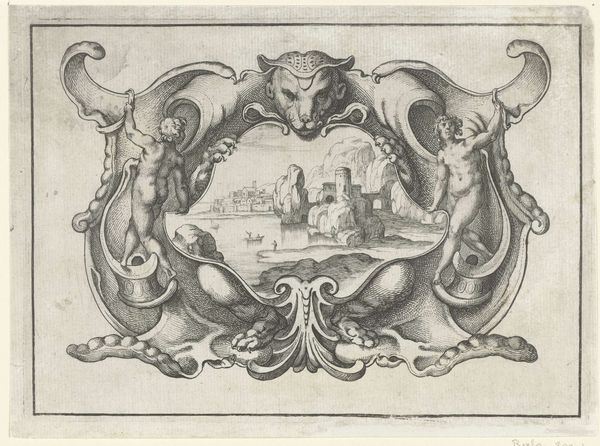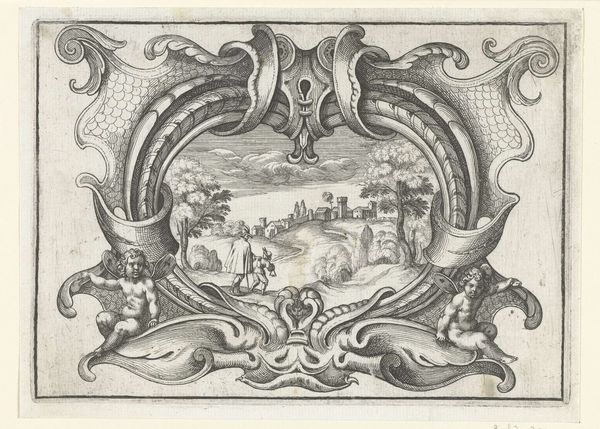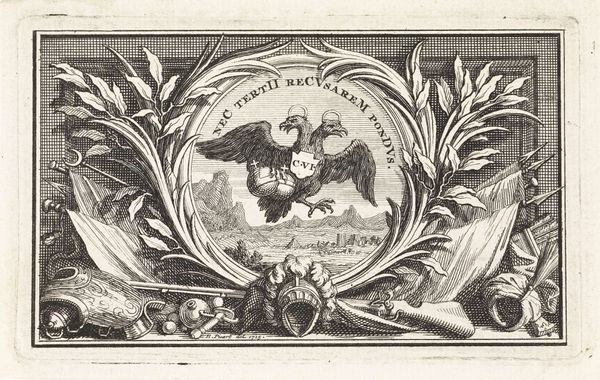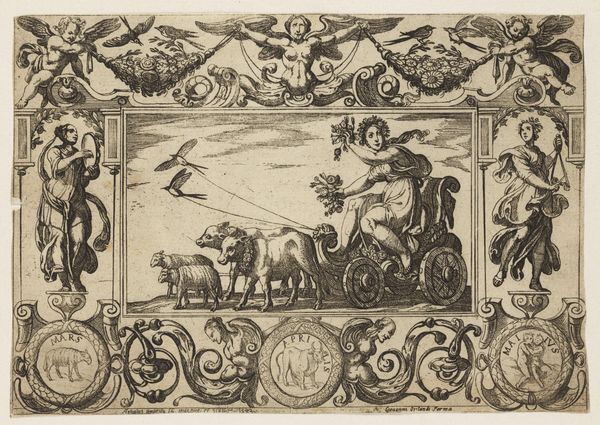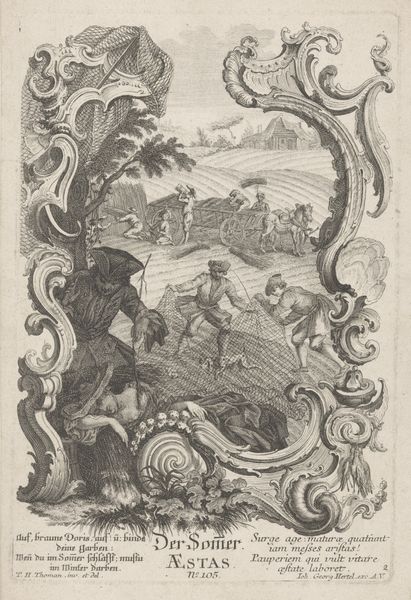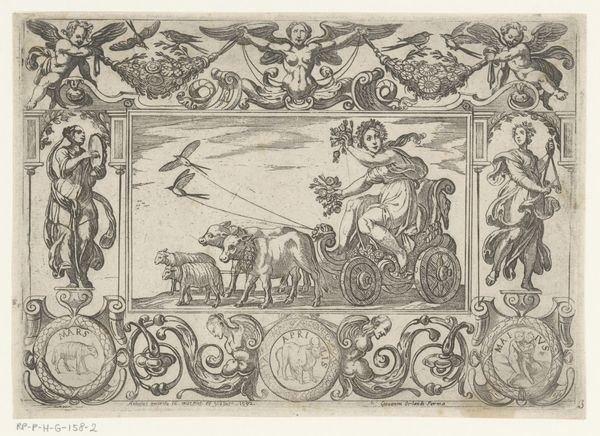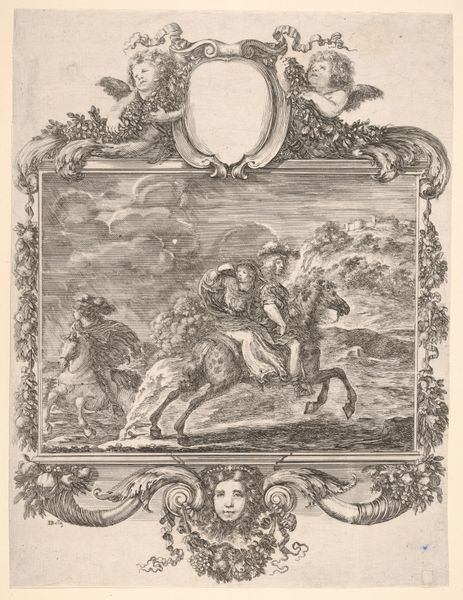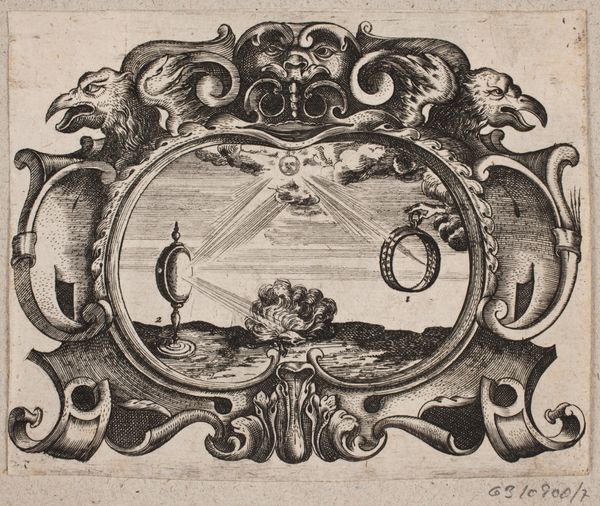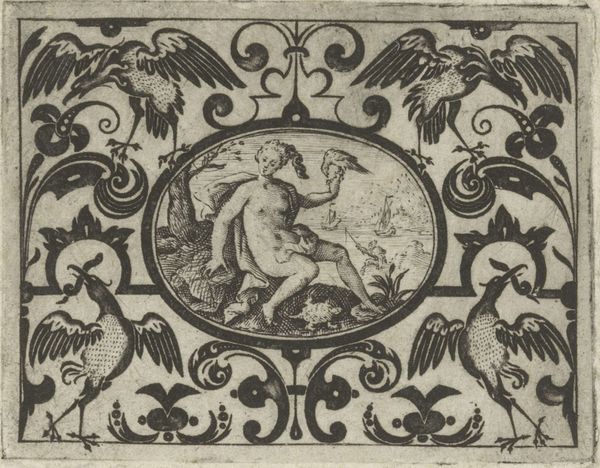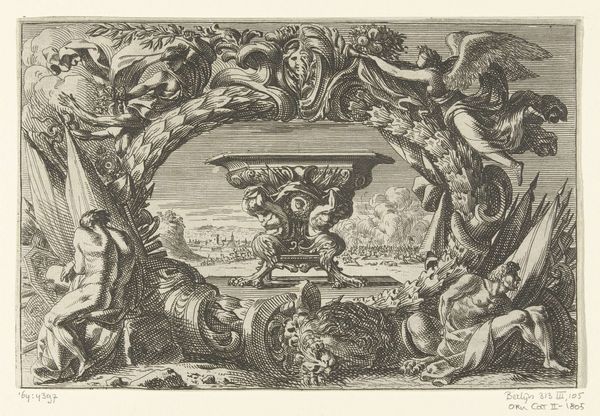
engraving, architecture
#
baroque
#
french
#
old engraving style
#
form
#
line
#
cityscape
#
history-painting
#
decorative-art
#
engraving
#
architecture
Dimensions: height 145 mm, width 220 mm
Copyright: Rijks Museum: Open Domain
Jean Lepautre created this print, *Bassin en mobiele waterfontein in cartouche*, using etching techniques. Look closely, and you’ll see the marks left by the etcher's tool. Unlike engraving, where lines are cut directly into the metal plate, etching uses acid to bite into the surface. The artist draws through a waxy, acid-resistant ground, exposing the metal underneath. This allows for a more fluid, expressive line than is typical of engraving. Lepautre was one of the most prolific and important printmakers of his time. His designs circulated widely and influenced the production of luxury goods across Europe. Notice the elaborate fountains, cherubic figures, and swirling cartouches? This aesthetic was highly sought after. Prints like these were essential to the fashion economy of the 17th century. While Lepautre himself was a skilled artisan, the true impact of his work lay in its capacity to shape the tastes and desires of a growing consumer culture. His prints helped disseminate new styles and fueled demand for luxury goods, blurring the lines between art, design, and commerce.
Comments
No comments
Be the first to comment and join the conversation on the ultimate creative platform.

